Supreme Court Ruling Limits Central American Migrants to Claim Asylum – it prohibits migrants who have resided in or traveled through third countries from seeking asylum in the US.
While there needs to be comprehensive immigration reform – including a pathway to citizenship for those already living in the US, this ruling does not appear to be a solution and is certainly biased relative to our Southern neighbors. Our government appears to be helpless when it comes to the big issues- healthcare and immigration.
While personally, we are against providing illegal immigrants with driver’s licenses or on-going healthcare, we need a better path to citizenship than we have now- 10 Million people are living the US illegally. Either you are legal or not and if not, do something about it Congress.
A 2019 Gallup poll found that 76 percent of Americans considered immigration a good thing for the United States. As many as 81 percent supported a path to citizenship for undocumented immigrants if they meet certain requirements. Are quotas an option then prioritize the order under which immigrants would be admitted under that limit? Reducing or eliminating categories of immigration?
The most pressing problem in Honduras and El Salvador continues to be violence, specifically gang violence. Guatemala, which has seen the biggest increase in migration to the US in the current surge, is generally more beset by crushing poverty than gang violence. Poverty, no matter how dire, isn’t grounds to seek asylum. Good thing the Irish are not wanting to come these days.
America’s history has reflected those coming to the US from poorer countries seeking a new life, those seeking freedom from persecution or those seeking professional opportunities. Today more than 40 million people living in the US were born in another country or 13.6% of the population. Of those, 77% are in the US legally and 45% were naturalized US citizens.
From Pewreserach.org- key findings about US immigrants
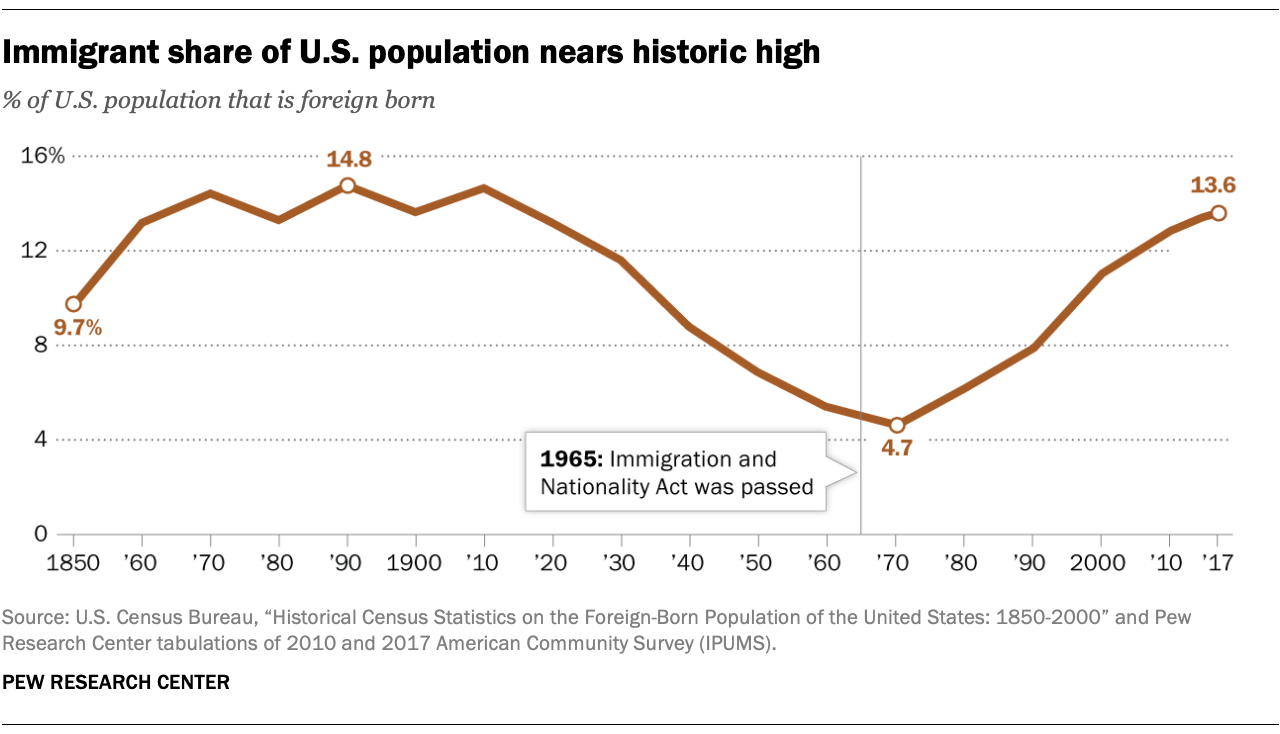
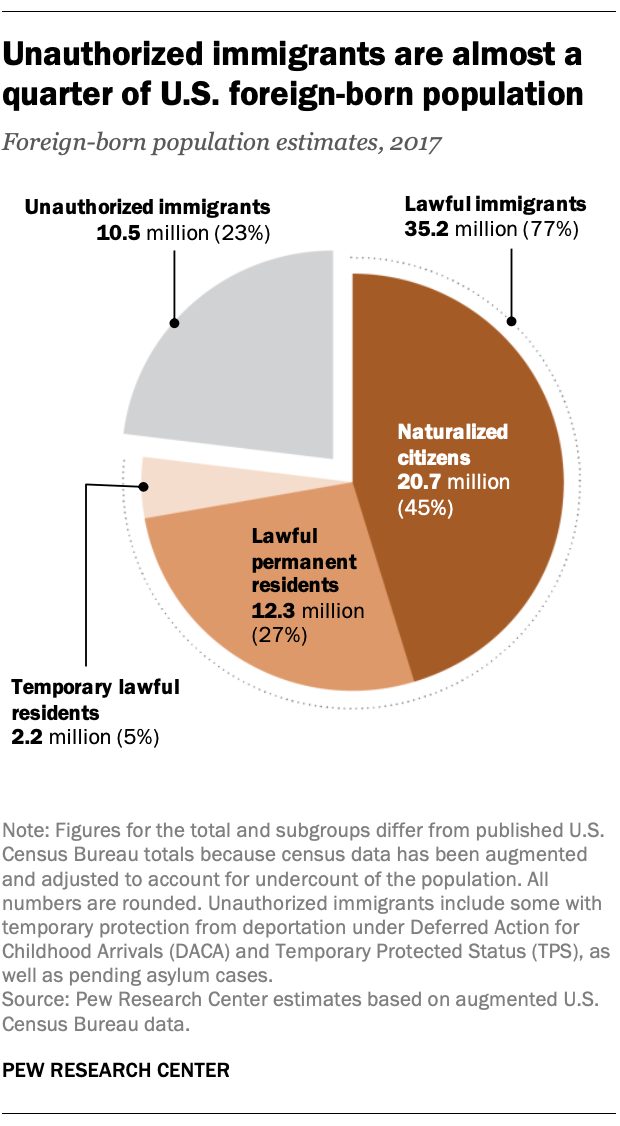
From 1990 to 2007, the unauthorized immigrant population more than tripled in size – from 3.5 million to a record high of 12.2 million in 2007. By 2017, that number had declined by 1.7 million, or 14%. There were 10.5 million unauthorized immigrants in the U.S. in 2017, accounting for 3.2% of the nation’s population.
The decline in the unauthorized immigrant population is due largely to a fall in the number from Mexico – the single largest group of unauthorized immigrants in the U.S. Between 2007 and 2017, this group decreased by 2 million. Meanwhile, there was a rise in the number from Central America and Asia.
Not all lawful permanent residents choose to pursue U.S. citizenship. Those who wish to do so may apply after meeting certain requirements, including having lived in the U.S. for five years. In fiscal year 2018, about 800,000 immigrants applied for naturalization.
Mexican lawful immigrants have the lowest naturalization rate overall. Language and personal barriers, lack of interest and financial barriers are among the top reasons for choosing not to naturalize.
Mexico is the top origin country of the U.S. immigrant population. In 2017, 11.2 million immigrants living in the U.S. were from there, accounting for 25% of all U.S. immigrants. The next largest origin groups were those from China (6%), India (6%), the Philippines (5%) and El Salvador (3%).
More than 1 million immigrants arrive in the U.S. each year. In 2017, the top country of origin for new immigrants coming into the U.S. was India, with 126,000 people, followed by Mexico (124,000), China (121,000) and Cuba (41,000).
Asians are projected to become the largest immigrant group in the U.S. by 2055, surpassing Hispanics.
Roughly half (45%) of the nation’s 44.4 million immigrants live in just three states: California (24%), Texas (11%) and New York (10%).
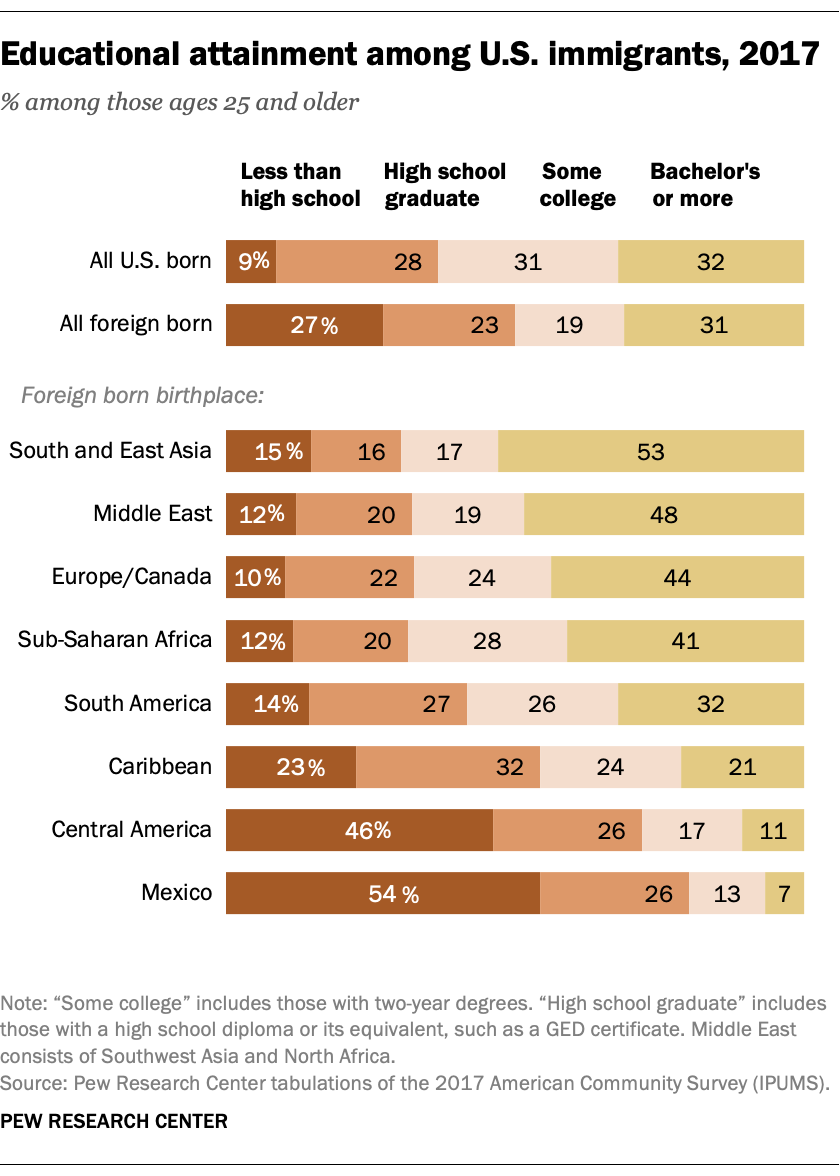
In fiscal 2018, a total of 22,491 refugees were resettled in the U.S.
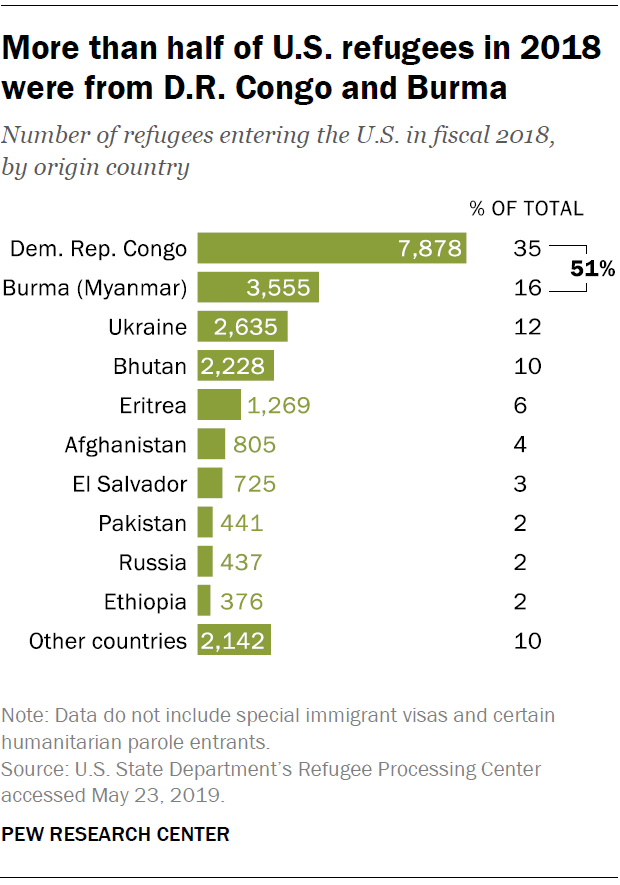
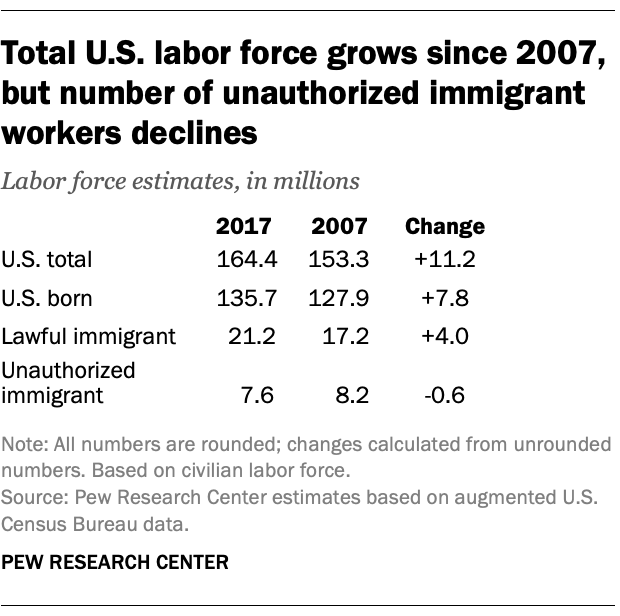
Another issues, immigration court backlog.
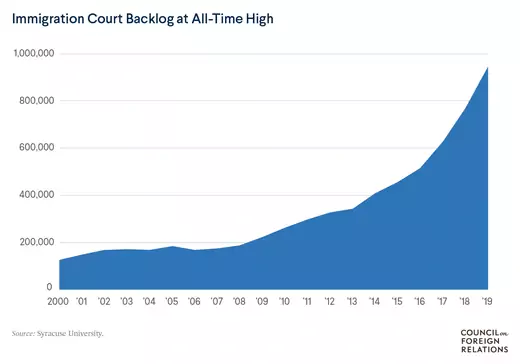
Learn more about the US immigration debate from Council on Foreign Relations






